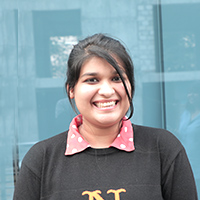11 Show-Stopping Red Azalea Varieties for Vibrant Garden Color
Reliable selections deliver bold contrast and reblooming blooms for shaded borders.

Image: HearthJunction Design Team
Azaleas are cherished worldwide for their vibrant blooms and adaptability, bringing bursts of color to gardens each spring. While pinks and purples are most common, red azaleas offer a dramatic, less frequently seen pop of color that’s perfect for adding bold contrast and dimension. Whether you’re designing a formal hedge, a shady woodland retreat, or need an eye-catching accent, choosing the right red azalea variety for your zone and garden style is essential. Below, explore 11 dazzling red azalea varieties, their unique attributes, and tips for growing them successfully.
Contents
- Why Choose Red Azaleas?
- 11 Outstanding Red Azalea Varieties
- Planting and Caring for Red Azaleas
- Garden Design Tips with Red Azaleas
- Frequently Asked Questions
Why Choose Red Azaleas?
Red azaleas are less common than pink or purple varieties, making them a bold selection for spring and summer color. Their fiery petals provide contrast against the greens of ferns, hostas, and other shade-loving plants. Many red varieties are evergreen, offering year-round structure and color. They thrive in partial shade and acidic soils, making them versatile options for both dedicated garden beds and woodland borders.
11 Outstanding Red Azalea Varieties
From compact dwarfs to robust hedging types, the following red azaleas are celebrated for their unique hues, hardiness, and landscape impact. For each, we include the scientific name, size, bloom time, hardiness zones, and notable characteristics.
1. ‘Autumn Bonfire’
- Scientific Name: Rhododendron ‘Robleza’ PPAF
- Plant Size: 3 ft high × 3.5 ft wide
- Bloom Time: Spring, summer, and fall (reblooming)
- Plant Zone: 6–10
- Type: Evergreen shrub
‘Autumn Bonfire’ is a true red azalea that offers double or semi-double flowers starting in spring and reblooming until frost. Its compact, tidy habit makes it ideal for foundation plantings or containers. Brilliant green foliage remains attractive year-round, and as a member of the Encore series, it delivers prolonged color.
2. ‘Autumn Embers’
- Scientific Name: Rhododendron ‘Conleb’
- Plant Size: 3 ft high × 3.5 ft wide
- Bloom Time: Spring to first frost (reblooming)
- Plant Zone: 6–10
- Type: Evergreen
With dazzling scarlet-red, double blooms, ‘Autumn Embers’ is a standout in shady beds or woodland edges. Its compact growth, reliable reblooming cycle, and frost tolerance make it a garden favorite for extended seasonal color.
3. ‘Red Ruffles’
- Scientific Name: Rhododendron ‘Red Ruffles’
- Plant Size: 2–3 ft high × 3–4 ft wide
- Bloom Time: Spring
- Plant Zone: 7–10
- Type: Evergreen, dwarf
‘Red Ruffles’ features frilly, deep cerise to red blooms—single to semi-double—that create a vibrant, low hedge or border. Its compact, mounded form and glossy evergreen leaves provide year-round interest. This variety thrives in small spaces and containers.
4. ‘Stewartsonian’
- Scientific Name: Rhododendron ‘Stewartsonian’
- Plant Size: 3–4 ft high × 4–6 ft wide
- Bloom Time: Spring
- Plant Zone: 5–8
- Type: Evergreen
The Stewartsonian Azalea is renowned for its clusters of deep crimson to magenta flowers and attractive, compact shape. Its foliage often takes on bronze or reddish hues in the cold season, extending its ornamental appeal. It’s adaptable and resilient, perfect for hedging or as a specimen plant.
5. ‘Autumn Sangria’
- Scientific Name: Rhododendron ‘Conho’
- Plant Size: 4–5 ft high × 4 ft wide
- Bloom Time: Spring, Summer, Fall (reblooming)
- Plant Zone: 6–10
- Type: Evergreen
‘Autumn Sangria’ offers big, bold pink-red blooms that rebloom from spring through fall, ensuring a long-lasting garden display. Its robust form suits mass plantings or standalone specimen use. Like other Encores, it’s prized for reliability and repeat blooming.
6. ‘Gibraltar’
- Scientific Name: Rhododendron ‘Gibraltar’
- Plant Size: 4–6 ft high × 4–6 ft wide
- Bloom Time: Mid-spring
- Plant Zone: 5–8
- Type: Deciduous
‘Gibraltar’ stands out with fiery orange-red, frilled flowers in large trusses. As a deciduous type, it drops leaves in winter but rewards gardeners with spectacular blooms each spring.
7. ‘Fireball’
- Scientific Name: Rhododendron ‘Fireball’
- Plant Size: 4–6 ft high × 4–6 ft wide
- Bloom Time: Late spring
- Plant Zone: 6–8
- Type: Deciduous
‘Fireball’ is another deciduous variety featuring tight clusters of scarlet red flowers. Its upright habit is perfect for naturalizing in woodland borders or adding drama to mixed shrub beds.
8. ‘Hot Shot’
- Scientific Name: Rhododendron ‘Hot Shot’
- Plant Size: 2-3 ft high × 3-4 ft wide
- Bloom Time: Mid to late spring
- Plant Zone: 6–9
- Type: Evergreen
With a compact habit and bright orange-red blooms, ‘Hot Shot’ is perfect for edging pathways or brightening small garden spaces. Its evergreen leaves and prolific flowers make it a reliable choice.
9. ‘Hino Crimson’
- Scientific Name: Rhododendron ‘Hino Crimson’
- Plant Size: 2–4 ft high × 3–5 ft wide
- Bloom Time: Spring
- Plant Zone: 6–9
- Type: Evergreen
‘Hino Crimson’ is a classic kurume azalea, beloved for its small size and dense clusters of bright red flowers. It’s well-suited for low borders, foundation plantings, or massed for a carpet of spring color.
10. ‘Hershey Red’
- Scientific Name: Rhododendron ‘Hershey Red’
- Plant Size: 2–3 ft high × 3–4 ft wide
- Bloom Time: Spring
- Plant Zone: 6–9
- Type: Evergreen
Producing masses of clear, deep red blooms, ‘Hershey Red’ is prized for its reliable performance and compact size. It’s perfect for formal garden borders or as a colorful accent in mixed beds.
11. ‘Red Satin’
- Scientific Name: Rhododendron ‘Red Satin’
- Plant Size: 3–4 ft high × 4 ft wide
- Bloom Time: Spring
- Plant Zone: 6–9
- Type: Evergreen
‘Red Satin’ dazzles with its glossy, dark green leaves and clusters of bright red spring flowers. Its medium size suits both large and small landscapes, providing a vivid focal point each year.
Comparison Table: Quick Overview of Top Red Azalea Varieties
| Variety | Height | Bloom Time | Type | Zones |
|---|---|---|---|---|
| Autumn Bonfire | 3 ft | Spring–fall (rebloom) | Evergreen | 6–10 |
| Autumn Embers | 3 ft | Spring–fall (rebloom) | Evergreen | 6–10 |
| Red Ruffles | 2–3 ft | Spring | Evergreen | 7–10 |
| Stewartsonian | 3–4 ft | Spring | Evergreen | 5–8 |
| Autumn Sangria | 4–5 ft | Spring–fall (rebloom) | Evergreen | 6–10 |
| Gibraltar | 4–6 ft | Mid-spring | Deciduous | 5–8 |
| Fireball | 4–6 ft | Late spring | Deciduous | 6–8 |
| Hot Shot | 2–3 ft | Mid–late spring | Evergreen | 6–9 |
| Hino Crimson | 2–4 ft | Spring | Evergreen | 6–9 |
| Hershey Red | 2–3 ft | Spring | Evergreen | 6–9 |
| Red Satin | 3–4 ft | Spring | Evergreen | 6–9 |
Planting and Caring for Red Azaleas
Red azaleas are low-maintenance shrubs if their basic needs are met. Here are essential tips for successful planting and ongoing care:
- Soil: Azaleas thrive in acidic, well-drained soils. Amend with organic matter like pine bark or leaf mold for best results.
- Light: Partial shade is ideal; too much sun can scorch leaves, and deep shade slows flowering.
- Watering: Keep soil consistently moist, especially in hot or dry climates. Mulching helps retain soil moisture and protects shallow roots.
- Mulching: Apply a 2–3 inch layer of pine bark or needles to moderate soil temperature and conserve moisture.
- Fertilizing: Use a slow-release, acid-formulated fertilizer after bloom to encourage new growth.
- Pruning: Only prune as needed to shape or remove damaged wood, immediately after flowering to avoid cutting off next year’s buds.
- Protection: In colder climates, provide wind breaks or wrap with burlap in winter.
Azaleas have shallow roots and dislike being disturbed—avoid deep cultivation near the base. With proper care, these shrubs can live and bloom for decades!
Garden Design Tips with Red Azaleas
- Borders and Hedges: Use upright types like ‘Stewartsonian’ or ‘Autumn Bonfire’ for low privacy screens or boundary lines.
- Woodland Gardens: Plant among ferns, hostas, and shade perennials for a naturalistic look and layered color.
- Foundation Plantings: Compact varieties such as ‘Red Ruffles’ suit the foreground of mixed beds or around homes for year-round greenery and seasonal bloom.
- Container Displays: Dwarf azaleas thrive in pots; mix with evergreens and spring bulbs for multi-season interest.
- Accent Plant: Feature bold varieties like ‘Gibraltar’ as a focal point in small beds or entryways.
Remember to group azaleas in threes or fives for naturalistic impact, and vary foliage texture with companion plants like Japanese maples or ornamental grasses.
Frequently Asked Questions (FAQs)
Q: How do I get my red azaleas to bloom more profusely?
A: Ensure your azaleas are planted in acidic soil, receive filtered sunlight, and are mulched to conserve moisture. Prune only after flowering, and feed with a slow-release acid fertilizer. Reblooming varieties like the Encore Azaleas provide multiple flushes of blooms from spring through fall.
Q: Can red azaleas be grown in full sun?
A: While azaleas prefer partial shade, some varieties tolerate morning sun, especially in cooler zones. Avoid hot afternoon sun, which can scorch foliage and reduce flowering.
Q: What type of mulch is best for azaleas?
A: Organic mulches like pine bark, pine needles, or leaf mold are ideal. They acidify the soil and retain moisture, supporting healthy growth.
Q: How large do red azaleas get?
A: Sizes range from dwarf types (2–3 ft) to larger shrubs (up to 6 ft wide), so it’s important to choose a variety suited to your space. Check the height and spread for each variety listed above.
Q: Are red azaleas evergreen?
A: Many are evergreen, holding their leaves all year, though some red varieties are deciduous and drop their leaves in winter (e.g., ‘Gibraltar’ and ‘Fireball’).
Conclusion
Whether you’re after a fiery burst of spring color or a reliable evergreen backdrop, red azaleas offer versatility, style, and impact for any garden. By selecting the right variety for your climate and care needs, you’ll enjoy years of spectacular blooms and structure. From the compact ‘Red Ruffles’ to the bold ‘Autumn Bonfire’ and stately ‘Stewartsonian,’ there’s a red azalea for every taste and landscape.
References
Read full bio of Anjali Sayee












